In today’s “Beyond Basics” podcast segment of the newsletter, “Sustainable Food Gardens” author Robert Kourik discusses tips for attracting beneficial insects to your yard. Hear the entire interview in Episode 191 of the Garden Basics with Farmer Fred podcast.
In last week’s newsletter, we discussed three of the best beneficial insects to have in your garden: lacewings, ladybugs, and hoverflies. Today, we cover several more garden good guys worth putting to work in your yard to subdue the pests, and the “Welcome Mat” plants they need for extra food and shelter.
Soldier Beetles (leather-winged beetles)
Like many of the beneficials, it is the larval stage of soldier beetles that do most of the munching on the bad bugs. Whereas the adult soldier beetles feed mostly on the pollen and nectar of flowers - as well as the occasional aphid, insect eggs and larvae - young soldier beetles can be found under the bark of the plant or in soil or litter. There, they feed primarily on the eggs and larvae of beetles, butterflies, moths and other insects.
Plants That Attract Soldier Beetles
Celosia Cockscomb
Coreopsis
Daucus carota Queen Anne’s Lace
Echinacea purpurea Purple Coneflower
Pycnanthemum Mountain Mint
Rosa Roses
Solidago Goldenrod
PARASITIC MINI-WASPS
Mini-wasps are parasites of a variety of insects. They do not sting! The stingers have been adapted to allow the females to lay their eggs in the bodies of insect pests. The eggs then hatch, and the young feed on the pests from the inside, killing them. After they have killed the pests, they leave hollow “mummies.”
Braconid Wasps
Braconid wasps feed on moth, beetle and fly larvae, moth eggs, various insect pupae and adults. If you see lots of white capsules on the backs of a caterpillar, these are the braconid cocoons. Leave the dying caterpillar alone!
Ichneumonid wasps control moth, butterfly, beetle and fly larvae and pupae.
Trichogramma wasps lay their own eggs in moth eggs (hungry caterpillars-to-be), killing them and turning them black.
Plants that attract parasitic mini-wasps:
•Achillea filipendulina Fern-leaf yarrow
•Achillea millefolium Common yarrow
•Allium tanguticum Lavender globe lily
•Anethum graveolens Dill
•Anthemis tinctoria Golden marguerite
•Astrantia major Masterwort
•Callirhoe involucrata Purple poppy mallow
•Carum carvi Caraway
•Coriandrum sativum Coriander
•Cosmos bipinnatus Cosmos white sensation
•Daucus carota Queen Anne’s lace
•Foeniculum vulgare Fennel
•Limonium latifolium Statice
•Linaria vulgaris Butter and eggs
•Lobelia erinus Edging lobelia
•Lobularia maritima Sweet alyssum - white
•Melissa officinalis Lemon balm
•Mentha pulegium Pennyroyal
•Petroselinum crispum Parsley
•Potentilla recta ‘warrenii’ Sulfur cinquefoil
•Potentilla villosa Alpine cinquefoil
•Sedum kamtschaticum Orange stonecrop
•Sweet alyssum - white
•Tagetes tenuifolia Marigold ‘lemon gem’
•Tanacetum vulgare Tansy
•Thymus serpylum coccineus Crimson thyme
•Zinnia elegans Zinnia - 'liliput'
TACHINID FLIES
Parasites of caterpillars (corn earworm, imported cabbage worm, cabbage loopers, cutworms, armyworms), stink bugs, squash bug nymphs, beetle and fly larvae, some true bugs, and beetles. Adults are 1/3 to 1/2 inch long. White eggs are deposited on foliage or on the body of the host. Larvae are internal parasites, feeding within the body of the host, sucking its body fluids to the point that the pest dies.
Plants that attract tachinid flies:
•Anthemis tinctoria Golden marguerite
•Eriogonum fasciculatum California Buckwheat
•Melissa officinalis Lemon balm
•Mentha pulegium Pennyroyal
•Petroselinum crispum Parsley
•Phacelia tanacetifolia Phacelia
•Tanacetum vulgare Tansy
•Thymus serpyllum coccineus Crimson thyme
MINUTE PIRATE BUGS (Orius spp.)
True to their name, minute pirate bugs are tiny (1/20 inch long) bugs that feed on almost any small insect or mite, including thrips, aphids, mites, scales, whiteflies and soft-bodied arthropods, but are particularly attracted to thrips in spring.
DAMSEL BUGS (Nabis spp.)
Damsel bugs feed on aphids, leafhoppers, plant bugs, and small caterpillars. They are usually dull brown and resemble other plant bugs that are pests. Their heads are usually longer and narrower then most plant feeding species (the better to eat with!).
BIG EYED BUGS (Geocoris spp.)
Big eyed bugs are small (1/4 inch long), grayish-beige, oval shaped) bugs with large eyes that feed on many small insects (e.g., leaf hoppers, spider mites), insect eggs, and mites, as both nymphs and adults. Eggs are football shaped, whitish-gray with red spots.
Plants that attract minute pirate bugs, damsel bugs and big eyed bugs:
•Carum carvi Caraway
•Cosmos bipinnatus Cosmos “white sensation”
•Foeniculum vulgare Fennel
•Medicago sativa Alfalfa
•Mentha spicata Spearmint
•Solidago virgaurea Peter Pan goldenrod
•Tagetes tenuifolia Marigold “lemon gem”
Thank you also for listening to the Garden Basics with Farmer Fred podcast. It’s available wherever you get your podcasts. Please share it with your gardening friends.
Fred Hoffman is also a University of California Cooperative Extension Master Gardener in Sacramento County, California.






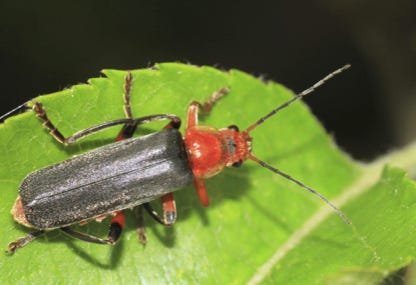
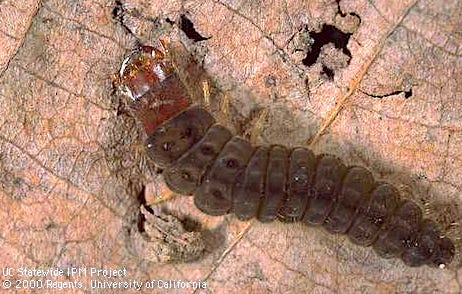

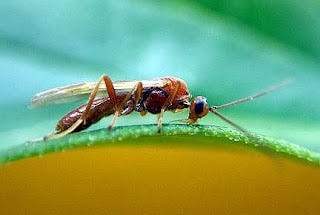
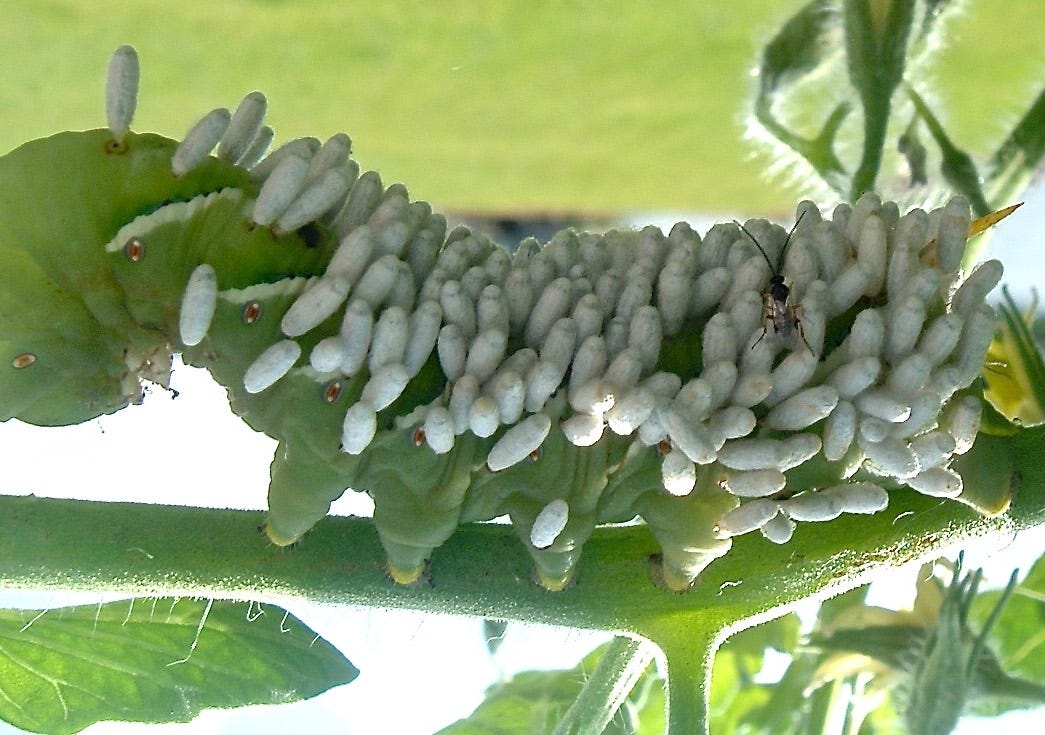
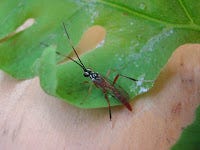
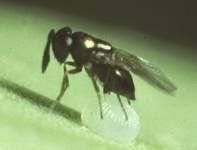
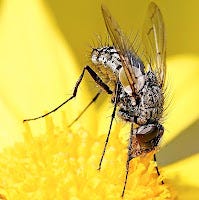
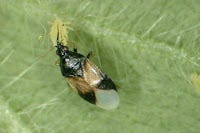
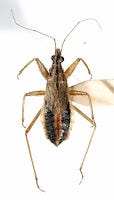
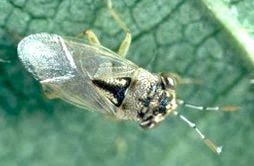


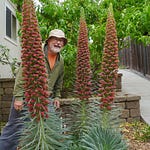

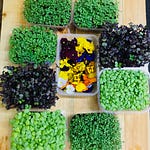
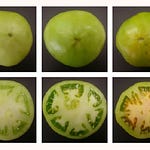

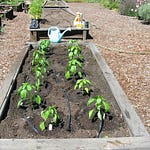
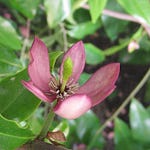
Share this post